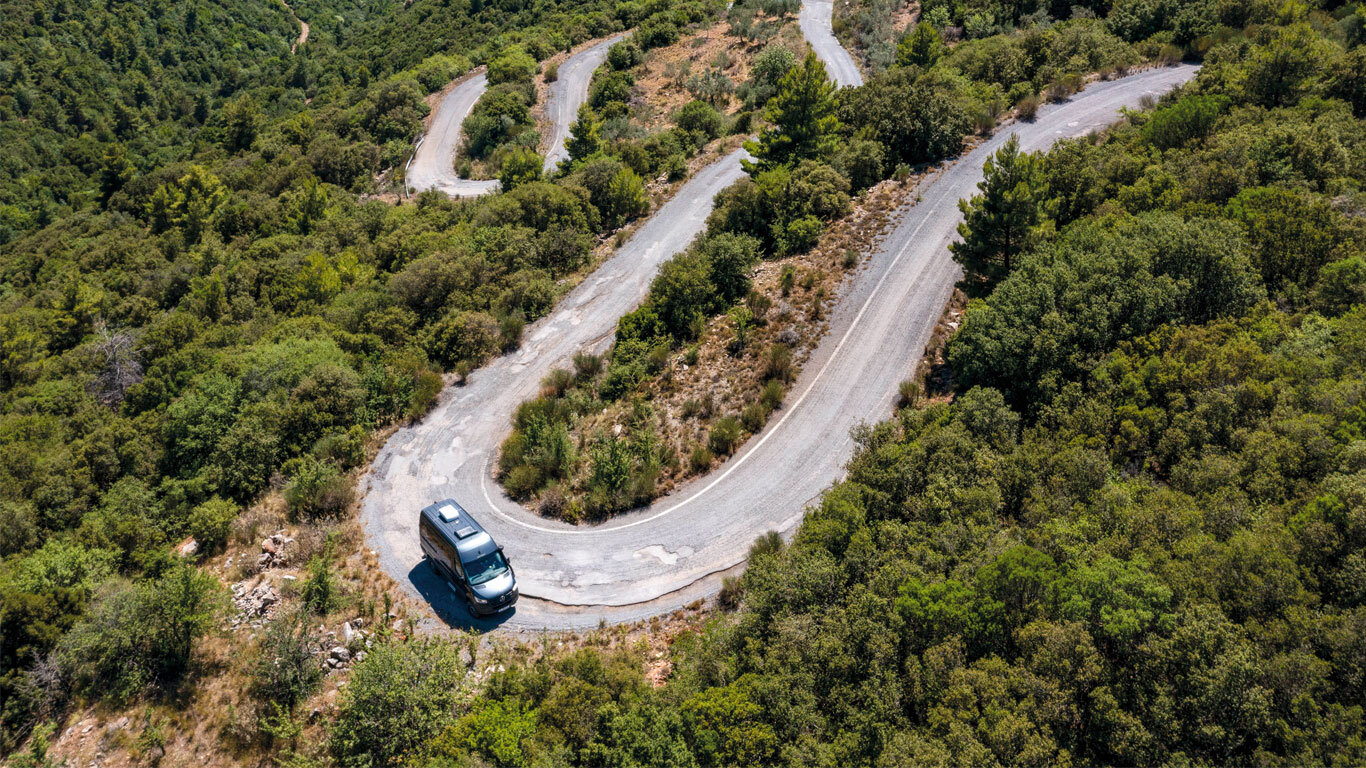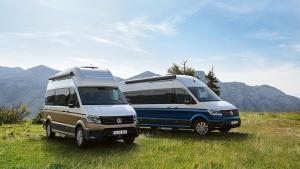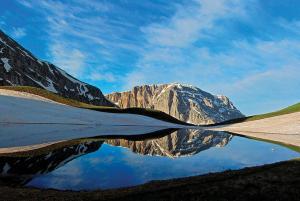Overlanders are evolving all the time. Whether it’s the gear we use being replaced by newer developments, or maybe we upgrade our vehicle to one better suited for future destinations. The more we travel, the more we learn about our own capabilities and requirements as well as the shortcomings of the products we use.
Sometimes, we outgrow our vehicles and need something larger, more comfortable, or more elaborately equipped. Reasons for change are just as plentiful as the styles and types of vehicle that can support our lifestyle. But how do we really know if we’re making the right choice? After all, this can be one of the biggest investments we make, so we need to be as sure as we can before parting with our hard earned savings.
One type of vehicle that has seen exponential growth in popularity in recent years is the van. Choosing a van brings with it the benefits of more living/work space, and the option of amenities such as a fully equipped bathroom. Larger than an SUV, vans are mostly smaller and more agile than a full-size truck, which is perfect when driving into cities or remote settlements. Available with all-wheel drive, their capabilities beyond the pavement may at first glance appear to be inferior to the smaller 4x4s and bigger trucks, but does that automatically equate to compromise?
Travelling in any style of vehicle entails forethought and planning when it comes to the route we take – we invest our hard earned savings and choose to live in our vehicles so that we can visit exciting destinations and either continue on to the next, or return home before preparing for a future adventure. Therefor, its reasonable to assume we should be looking after our investment as best we can. Choose routes suited to the vehicle and if the obstacles become too severe, then look for an alternative. Land Rovers and Toyotas also have their limitations, but we wouldn’t deliberately put them into situations that would jeopardise the continuance of the trip. Horses for courses.
In this article, Peter Bauza takes us on a journey that would ultimately help him fell decisions regarding how he can satisfy his personal and occupational requirements whilst overlanding. Having travelled extensively with his Toyota, Peter realised moving into a bigger vehicle would not only improve his comfort but also his workflow. The more he looked at his options, the more he realised his questions outnumbered his answers.
TIME FOR CHANGE
The Toyota has been sold, money is in the bank, what now? On tour with a 4×4 Sprinter from AllRoad Reisemobile.
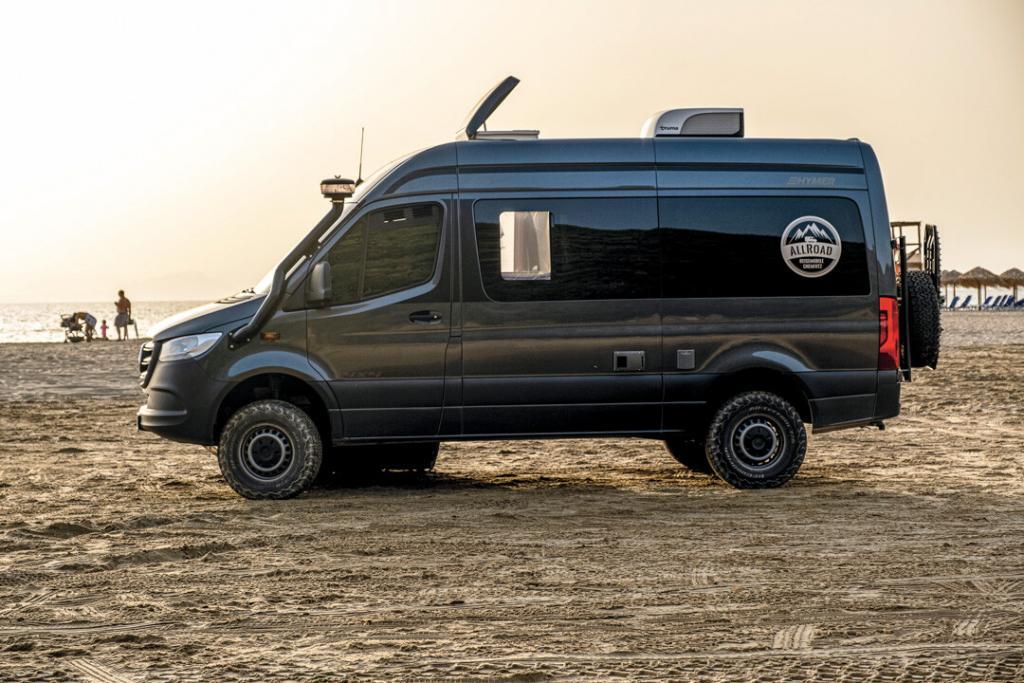
Maybe you have been in a similar situation when your heart says “I want to travel now”, but you’re lacking the right set of wheels. As the number of countries re-opening their borders steadily increases, I really want to start nurturing my travel addiction again. I sold the Toyota a few weeks ago and am now (not so) patiently awaiting delivery of my new 4×4 van—which is due in October. Or maybe it won’t get here until 2022. No-one can really say. The manufacturers and dealers can barely keep up with demand, and deficits in the supply chain haven’t improved since the outbreak of the Corona Pandemic.
To keep me mobile, I decided to go with a long-term 4×4 van rental from AllRoad Reisemobile in Chemnitz, Germany. I wasn’t in a position to pick and choose because I needed the van for four months, and it had to have all-wheel-drive – otherwise camping on a secluded beach or exploring the remote areas in the hills could quickly turn into a tortuous disappointment. Obviously, I’m not going to find my ideal vehicle as a rental. But, renting can certainly provide a lot of insight. You can gain experience in a vehicle similar to one you aspire to and learn if VanLife is really your thing or not, without the inherent fixed costs. If it is, then there’s nothing to stop you taking the next steps to a mobile home you can call your own.
Off we went to Chemnitz. The van was clean and ready to go with a full tank of diesel. This particular 4×4 Sprinter, a Hymer DuoCar, is quite impressive. The 10 cm lift to the bodywork and the A/T tyres, which all come with the all-wheel-drive conversion, certainly lend this truck a purposeful stance. The handover was quick and friendly. All previous damage and the overall condition were meticulously recorded. It’s worth noting that the company offers an all-encompassing carefree package (which I strongly recommend) including the final cleaning and some insurance benefits.
Heavy rain and an intimidating thunderstorm accompanied us on our way back to Munich where we loaded up our gear for the next four months. A thought crossed my mind: Is this really a 3.5-ton truck? If the popular press is anything to go by, you’d struggle to find one which isn’t overladen and that can lead to eye-watering fines in other, less tolerant, countries. A quick hop on the scales at an ADAC centre gave us the peace of mind we hoped for: With all the gear on board and the fuel tank brimming, the needle settled at 3,470 kg.
WE’RE OFF
After a few minor teething problems during the first couple of days and some warranty repairs by Hymer Sulzemoos in Munich, and Mercedes, we finally set off on our journey to Greece. All the necessary tests and registrations for Austria, Italy, and Greece were, of course, completed well in advance. Efficiency is something we Germans are proud of.
The plan was to catch the ferry in Ancona, Italy, in four days. No checks at the Austrian border. None at the Italian either. The satnav squawked, “you are in Italy.” The Sprinter’s V6 190 BHP diesel engine purred at around 2,500 RPM and the speedometer was reading 120 km/h as we began to learn more about our rental van. The sidewind assistant is just as brilliant invention as the adaptive cruise control. In my opinion, the factory suspension setup is a bit too soft causing the truck to sway slightly through the curves. The V6 diesel is quite the beast making spritely overtaking manoeuvres a joy. However, it is thirsty – not really a surprise considering 190 BHP and 3.5 tons. You know the saying: If you can’t stand the heat, get out of the kitchen. Alternatively, wait for an electric wonder.
Having found a nice quiet spot for the evening outside a sports ground near Bolzano, we used the opportunity to visit some friends. Thanks to vaccinations and tests, we could all sit at the same table again.

We continued to Lake Garda where we spent the next two days. It was suddenly much warmer and the temperatures were pushing 38°C. Good reason to find a shady and dog-friendly campsite. Keep your eyes peeled for “Dogs Welcome” sites when you’re travelling with your four-legged companion. The cool water in the lake provided a little respite, and we started to get into the holiday spirit.
The port in Ancona was reached with time to spare. A long queue at the Anek Lines check-in counter tested our patience, but at least they had air-conditioning. Car documents, passports, and vaccinations were checked before we we were given a green light for loading. We’d booked “Camping on Board” which basically means, you’re allowed to sleep in your camper, can hook up to the ship’s electricity supply, and can use the showers. The ferry was soon full of cars, campers and trucks with the experienced crew playing Tetris until we were all parked bumper to bumper. The crossing took seventeen hours.
“No-one checked on my arrival in Igoumenitsa.”—“The Ferry was over-booked.”—“There were queues five kilometres long to get onto the island.”—“They said we should go for PCR testing behind the trucks, but I just drove through.”—“Give me a beer.”—“I bought my camper last year, like everyone else…” That was all anybody could talk about at the small bar on Igoumenitsa’s beach. Those crispy tanned holidaymakers in their big white plastic campers and caravans—they’re a very special type of human being, and it quickly became clear we needed to create as much distance as we could between them and ourselves. After all, that’s why we rented a 4×4.
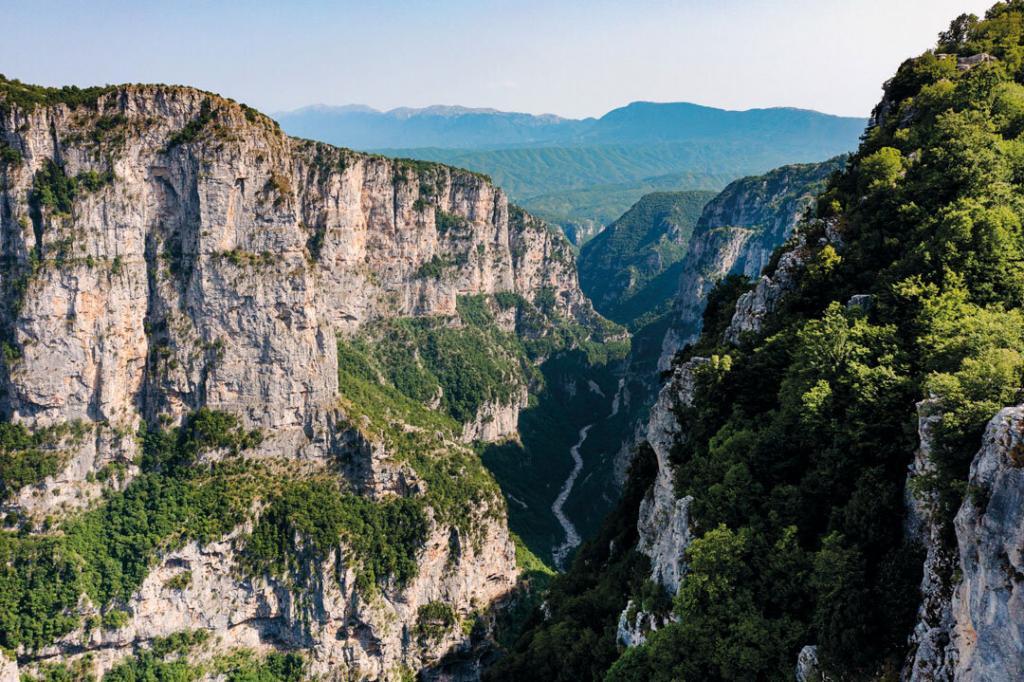
Feeling great, water tanks full, a mobile solar panel, a compressor, and a well-stocked fridge. So, what’s holding us back? We need time for ourselves, and a place where we certainly won’t miss all the BS. After a few days along the local coast we turned south toward Patras, the so-called gateway to the Peloponnese, with fewer people and even less vehicles. We found beautiful beaches, secluded coves, and crystal-clear warm water. Perfect for a few peaceful days.
According to Susanne and Gerd, “you can stay here, but you need to be on your toes. The police were here on Friday trying to get everyone to move on and dishing out 300-euro fines. We’ve been coming for twenty years, and have always stayed here for several weeks at a stretch along with the Greek families. It was never an issue. The Greeks are clever though, they take the number plates off of their caravans and park their cars elsewhere. Where do the police want to send the fines? But they always try it on with the foreigners.” This couple of pensioners, both well into their 80s, have been practicing VanLife for decades in their faithful old Fiat.
Every year, they take off for months at a time, and have seen and learned a lot. Pensioners without borders: camping wild wherever it takes their fancy and living their dream. Nothing can stop them, not even when there was a gas explosion which literally blew the doors off their camper and ingnited the wiring. They simply repaired everything bit by bit, right here on this beach, in four weeks. “Is it all supposed to be over now? We can’t afford campsites on our pensions. We’d have to stay at home.” Susanne gazed into the distance with a despondent look on her face.
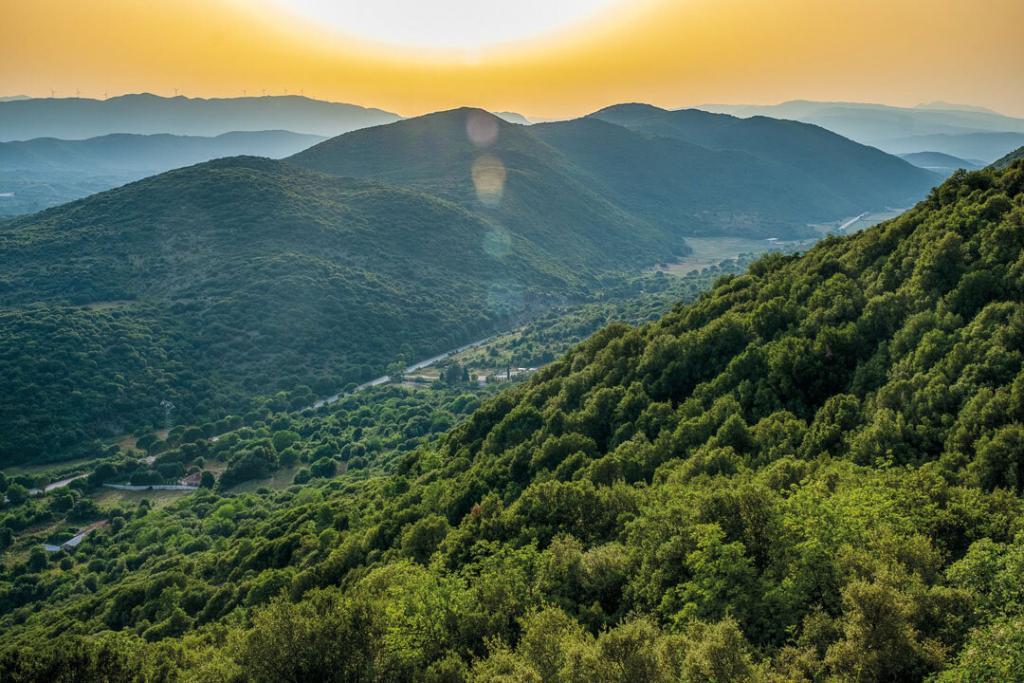
We stayed for three days without any police or other disturbances, just the gentle mooing of the cows and the buzz of mosquitoes in the evening. Unfortunately, the fly screen in the door gave up. An immediate solution couldn’t be found, but Hymer was informed and they promised a warranty repair upon our return. We improvised, and with some fiddling, it would slide to and fro.
It was time to go further south where the temperature climbed even further. Fortunately, spectacular beaches compensated us at every stop. The temperature rose to 38°C during the day (inside, I measured more the 50°C under the ceiling), there wasn’t the slightest breeze and shade proved itself a scarce commodity. Fortunately, the DuoCar is blessed with a roof-mounted aircon. But it needs to hook up to a power source.
We were really glad we’d brought along some tailor-made UPF 50+ BlidimaX window shades because they contributed a great deal to keeping the interior bearable, something which couldn’t be said for the REMIfront window blinds which weren’t up to the job.
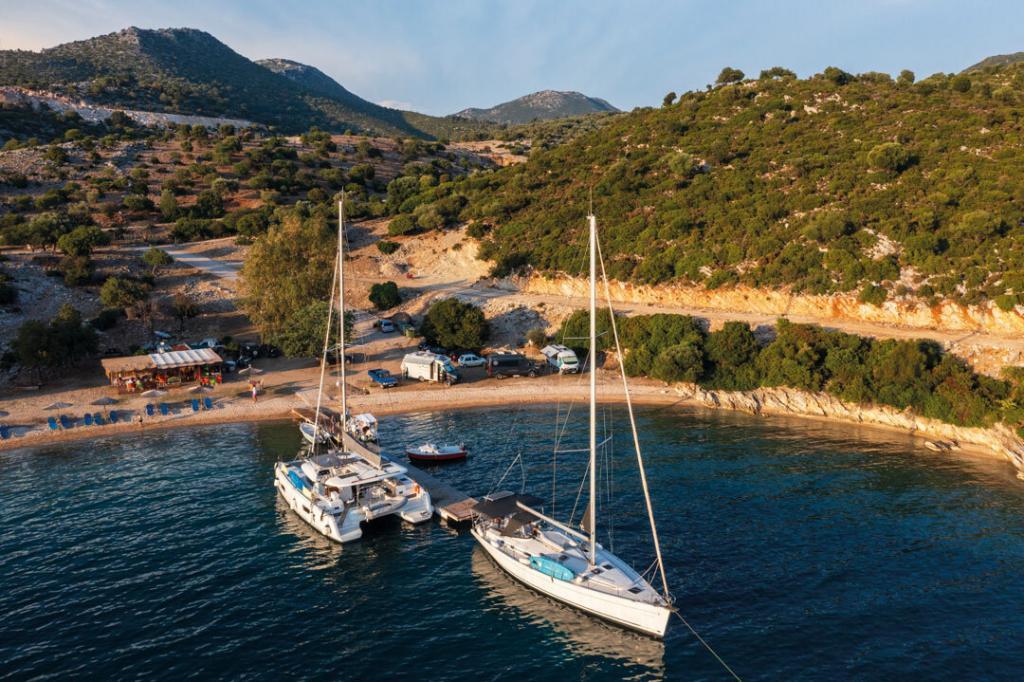
Bustling cities, friendly people, secluded paradisiacal coves, and fascinating history. All of this goes toward making Greece a dream destination for overlanders. Of the thousands of islands just off the coast, little more than a hundred are permanently inhabited. So make sure you bring plenty of time with you. And if you are a fan of culture and ancient history, then the Peloponnese peninsula is perfect for you and your truck. Incredible excavation sites, fortresses, and old cities bear witness to occupation dating back for as much as 4,000 years. Something we weren’t going to miss: Olympia and the Oracle of Delphi. There are plenty of Greeks who aren’t as enthusiastic about these findings as the foreign visitors. Hardly surprising when you consider they run the risk of uncovering Zeus’ or Apollo’s burial site every time they dig in their garden.
Greece has got different styles of places to stay, from modern hotel complexes to campsites. Wild camping is generally forbidden, even more so in the high season. So let’s not be too blatant about it. My home may well be my castle, but I can’t park it outside of a campsite or on the beach in front of a hotel. Subtlety is the name of the game. Travelling smart and camping wild only if the opportunity arises. And if someone does ask us to move on, then that’s what we’ll do—taking our rubbish with us. Filling up with fuel, driving our own trucks, and catering for ourselves, doesn’t help the Greek economy.
Occasionally visiting a hotel-like campsite, such as “Camping Ionion Beach” with its beautiful shoreline, shady pitches, lovely food, friendly staff, and inviting pool, is a great way to take a break from the heat. Contrary to every notion VanLifers may have of wild camping, we made the most of our ability to retreat into our air-conditioned domicile and extended our stay by a few days.
But then the time came to stop being lazy and be on our way again in search of Olympia, the mystical place where, beginning from 776 BC, the summer Olympics of ancient times were held every four years.
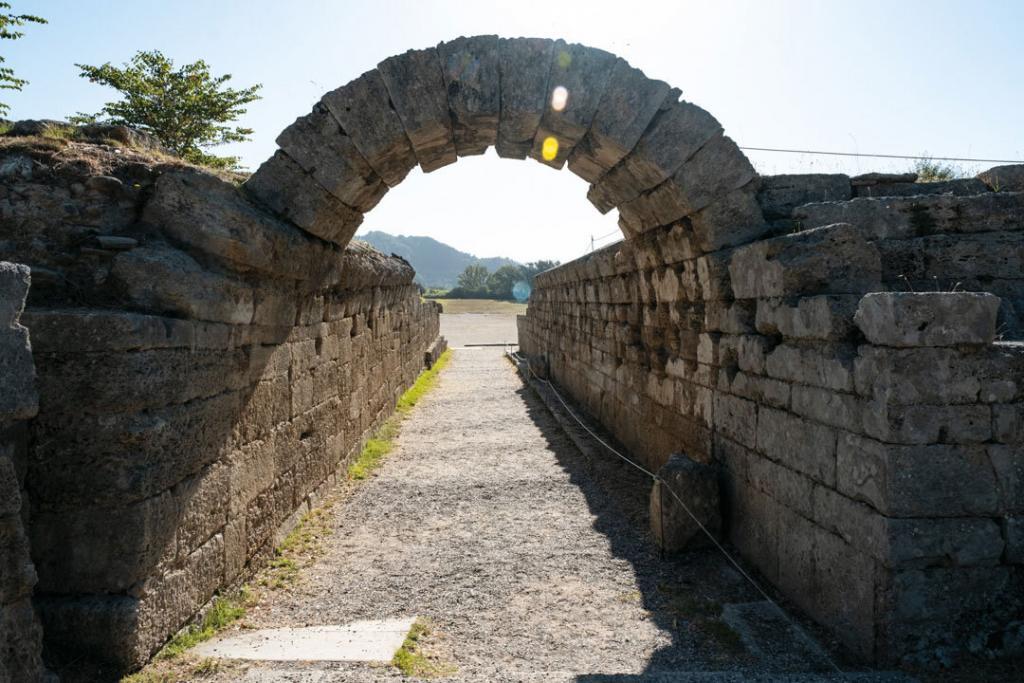

Hours of driving along small lonely roads lined with olive, fruit and vegetable plantations. Meandering from one charming village to the next. And then we arrived. Suffering the impact of the Corona crisis, tourism is at the lowest it’s been for ages. Empty or closed shops, restaurants and hotels are a sign of the economic catastrophe. But every cloud has a silver lining, for us at least: We were spared the usual flood of busses carrying tourists from around the world, and could visit the site on our own. Make sure you abide by the drone laws. Despite having suffered earthquakes, this UNESCO heritage site is really impressive. The remains of Zeus’ temple helps us realise how small we are, and how little impact each of us has on the course of history.
While you’re here, don’t forget to visit the museum. You won’t be disappointed. Every year after the rainy season, new relics come to light and are added to the display. As a precautionary measure against fire, the hills around the site are sprayed with water during the driest season.
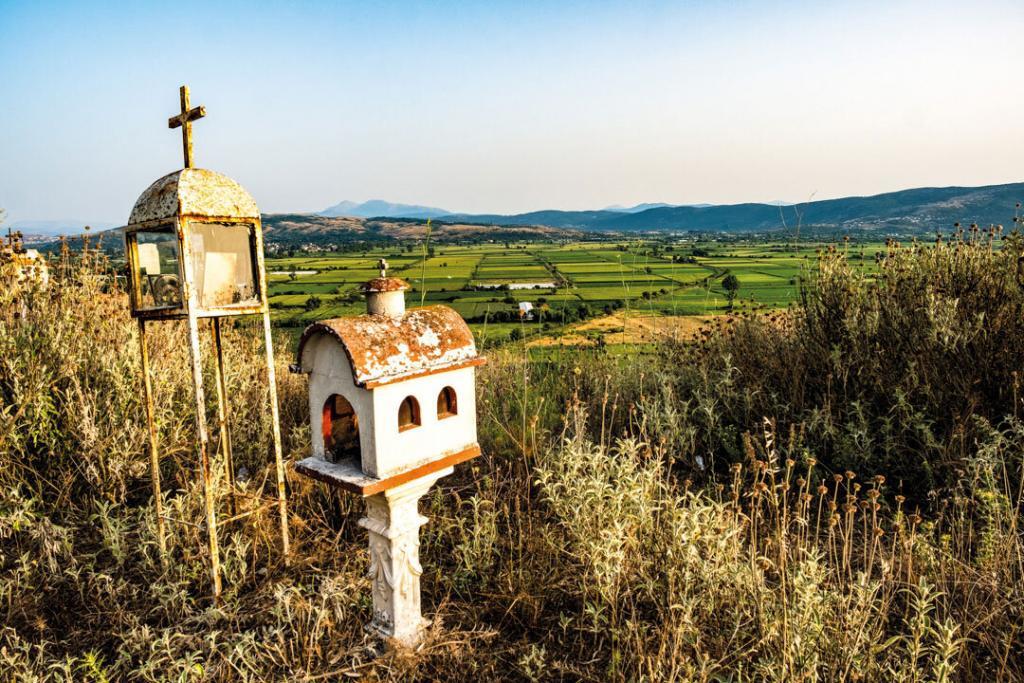
The heatwave forced us to seek refuge in the highlands. You need to pay attention on those twisty roads. Driving past towns like Stegnisza, the route led us to the fortified monasteries in Prodromous and Philosophou, both of which are still worked by monks. Impressive murals, icons, and mystical corridors will amaze you. You can visit these sacred places as long as you comply to the dress code and refrain from taking photographs. Unfortunately, four-legged companions have to wait outside.
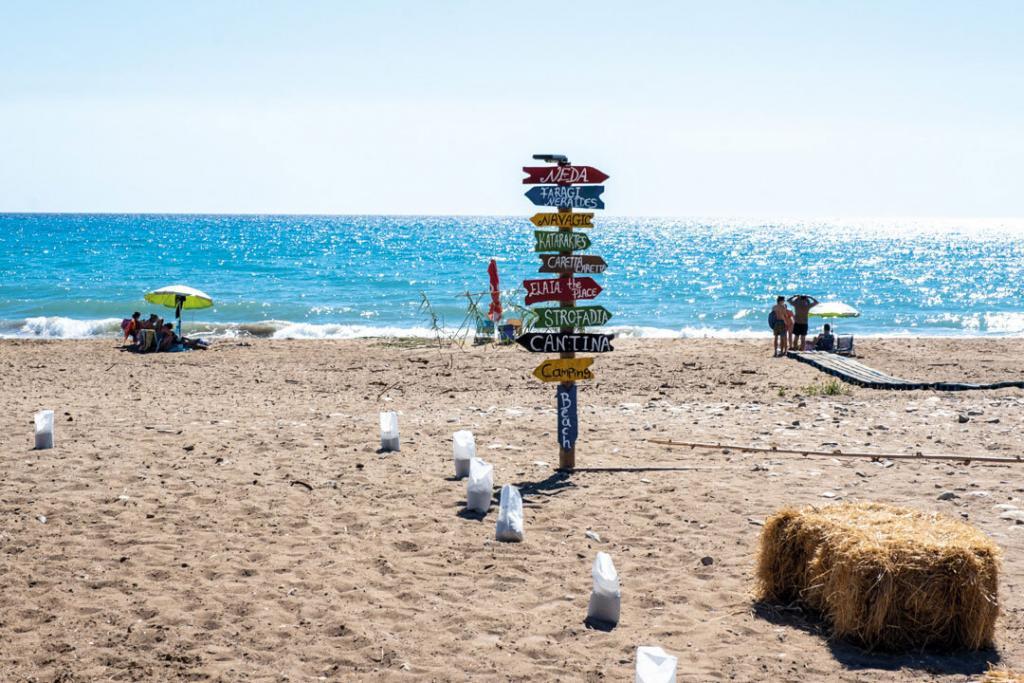
Back to the coast. On the lookout for somewhere to stop, we happened across the so-called hippie beach in Elea. A number of VanLifers told us about warnings and evictions by the local police, but I can’t say what really happened. We stayed in the shady woods for three days and made use of the showers and water supply installed by the non-profit organisation “Friends of the Beach.” A local farmer comes to the site every day and sells home produce such as vegetables, fruit, jams, sauces, and olives. If you have enough energy for a sundowner, you absolutely have to walk to the Beach Bar and chill to reggae music.
Heading even further south, endless twisting roads swept us through beautiful, clean, and almost deserted villages. Occasionally, old men sat at the roadside drinking beer outside a bar.
The journey was quite drawn out in its own right and the temperature, at around 40°C, didn’t improve matters for us. When I say “us” I am referring to our team comprising Chepi, a three-year old female Jack Russel mix, and myself, Peter. It’s amazing how resilient a small dog is, even if she has been panting far more than usual.
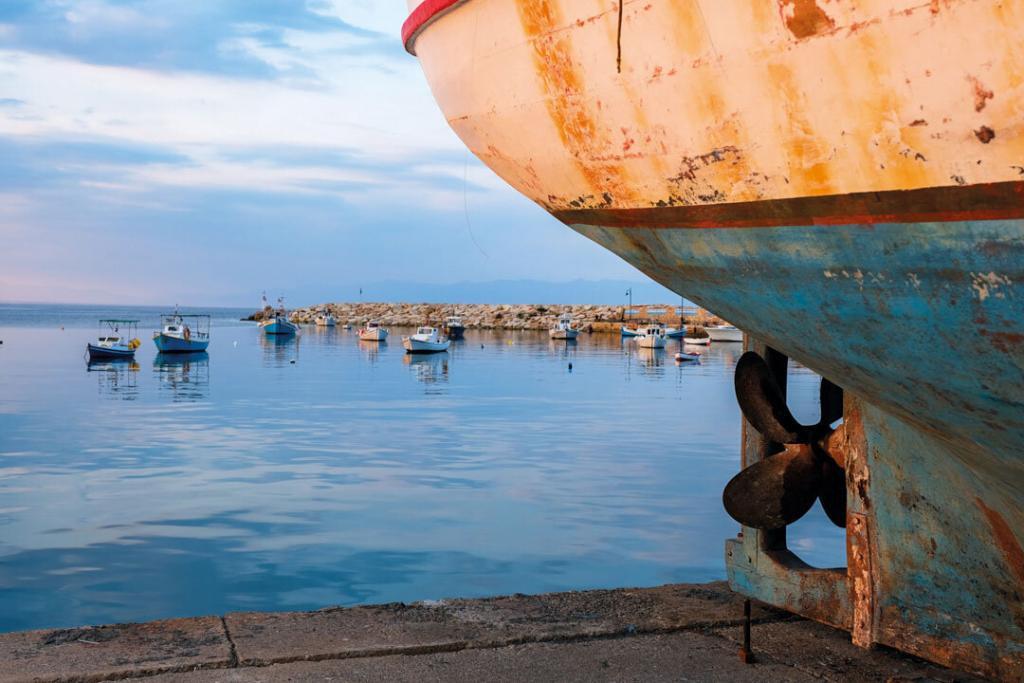
An act of spontaneity had us pulling into the family run “Koroni Camping” in the fishing village of the same name. What a spectacular view, regardless of whether from the bar or beside the pool. Clean, modern bathrooms were a welcome surprise. The hours we spent in the tiny alleys in and around Koroni, with fresh fish, cold drinks and stunning sunsets, seemed to disappear in the blink of an eye. It comes as no surprise that a lot of Germans stay here during the winter either in rented or purchased apartments. Thanks to our roof-mounted air-conditioner and the electric hook-up we had ordered, we had the luxury of being able to cool down the truck when we wanted to keep to ourselves.

The Peloponnese peninsula deserves to be circumnavigated. Passing villages, countless olive groves, and mountain ranges with fortress-like houses, we headed towards Mani, a notable region in Greece. Mani is the central of three peninsulas that make up the Peloponnese and draws its name from a fortress close to Mezapos, also known as Mani, Maina or le Magne. In 1250, Wilhelm II, prince of Franconia, tried to defend his realm here. The steep and craggy mountains stretch majestically skyward.
More narrow and winding roads cut through the Taygetos foothills under unimaginable summer temperatures which cause the air to shimmer. There is a lot to see here and it’s definitely worth taking the time to explore. Centuries of conflict between the Maniotes and the Ottoman occupiers shaped Mani both culturally and architecturally.
In some places, such as Vathia with its narrow cobblestone streets, abandoned residential towers with embrasures loom over the surrounding buildings. Only a few families live all year round in these otherwise deserted villages. A short break in a beautiful small fishing cove is the perfect invitation to stay overnight, but a friendly piece of advice from a boat owner about police patrols every evening, was enough for us to see reason and move on.
Night slowly started to close in and the mountain roads were less than hospitable with no obvious place for us to stop. The villages are so tight that even the locals struggle to find parking spots. It was dark by the time we arrived in a cove with nice castle-like hotels and small restaurants. We finally came to rest on the shore next to a luxury yacht lying at anchor. We didn’t even notice the roaming dogs and wild boar that came to visit during the night.
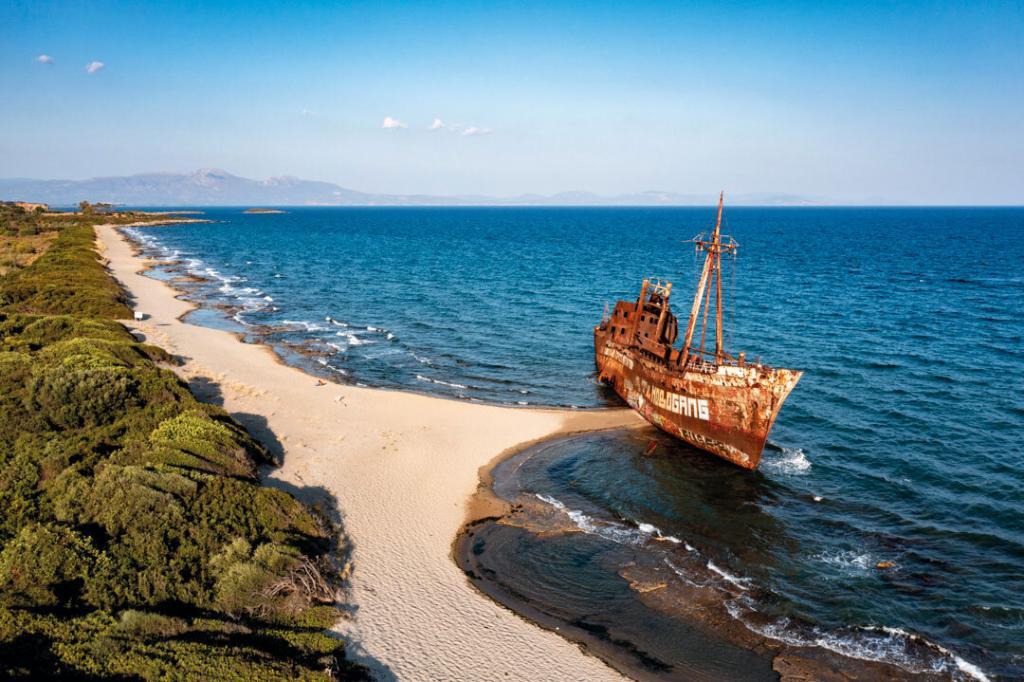
A voice over my shoulder said, “excuse me, here’s your €1.50 change.” Maria at the Glyfada beach restaurant had miscalculated. That was honest. Approximately ten kilometres east of Gythio, there’s a nice beach where the wrecked Dimitrios lies. Wild camping (albeit without any shade) is tolerated here, and if you need a cool shower or the toilets, you can use the facilities in the bar/restaurant during opening times. But please, stay for a cup of coffee or have an inexpensive meal as a token of your gratitude. We all want to come back again and benefit from their generosity.
Temperatures during the day settle at around 40°C. The nights aren’t noticeably cooler. There was news of the first forest fires. We met some of the local fire brigade along with some Australian firefighters, and their advice was to head north because the fires were likely to paralyse the region within the next few days.
We didn’t need to be told twice and drove to the northwest via Korinth to take in the famous Meteora monasteries. It was a three-day journey past many attractive spots, including Mistrá, aka Mystras, not far from Sparta, another UNESCO site. We made a further obligatory stopover here.
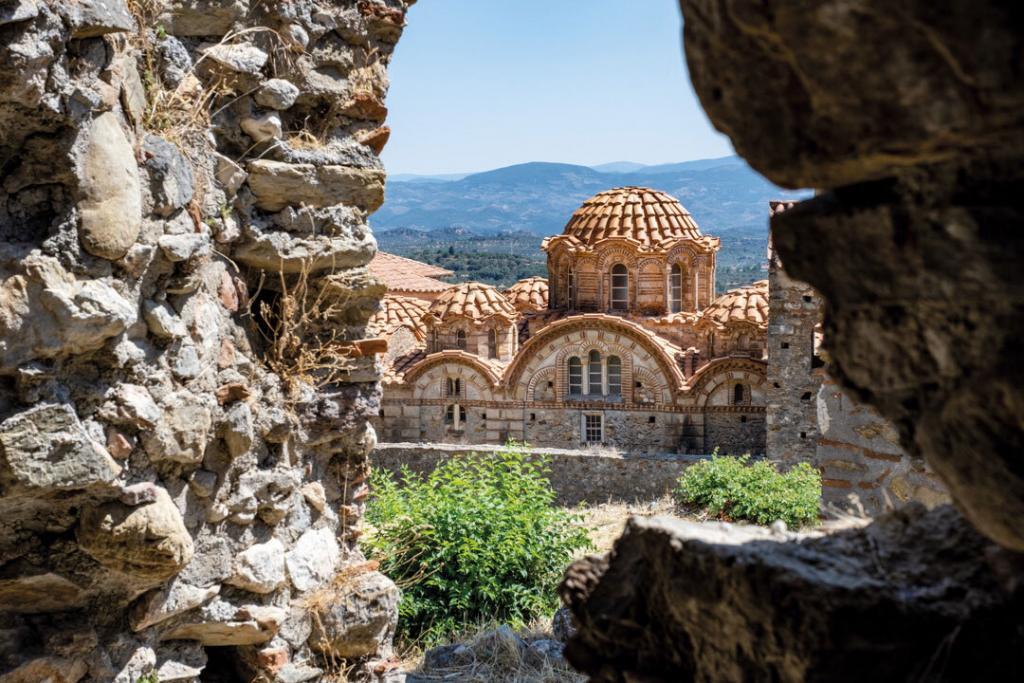
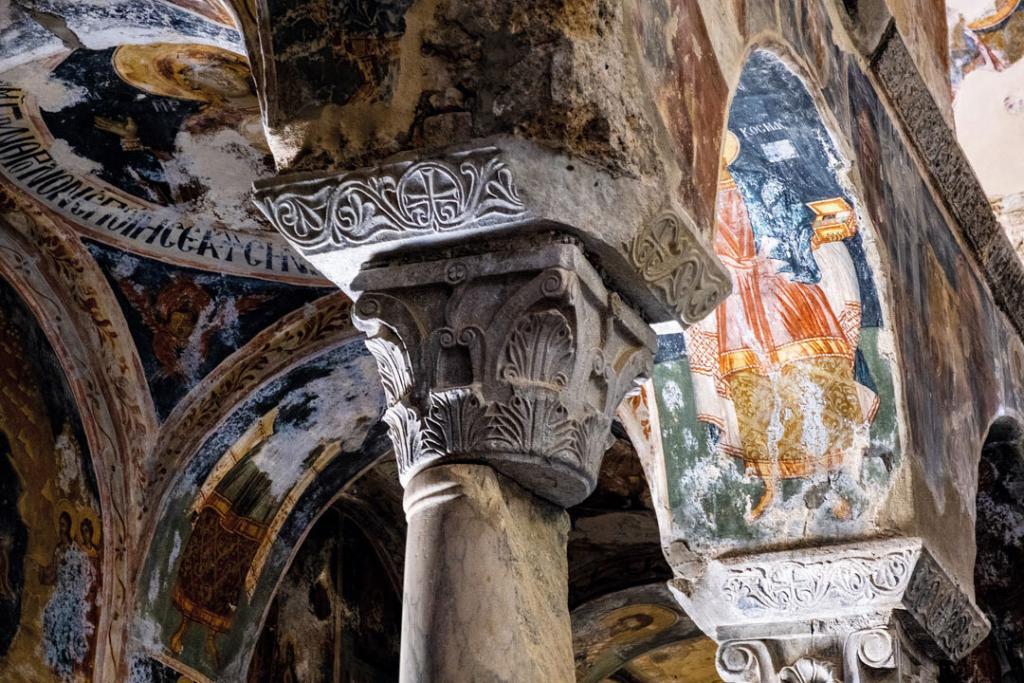
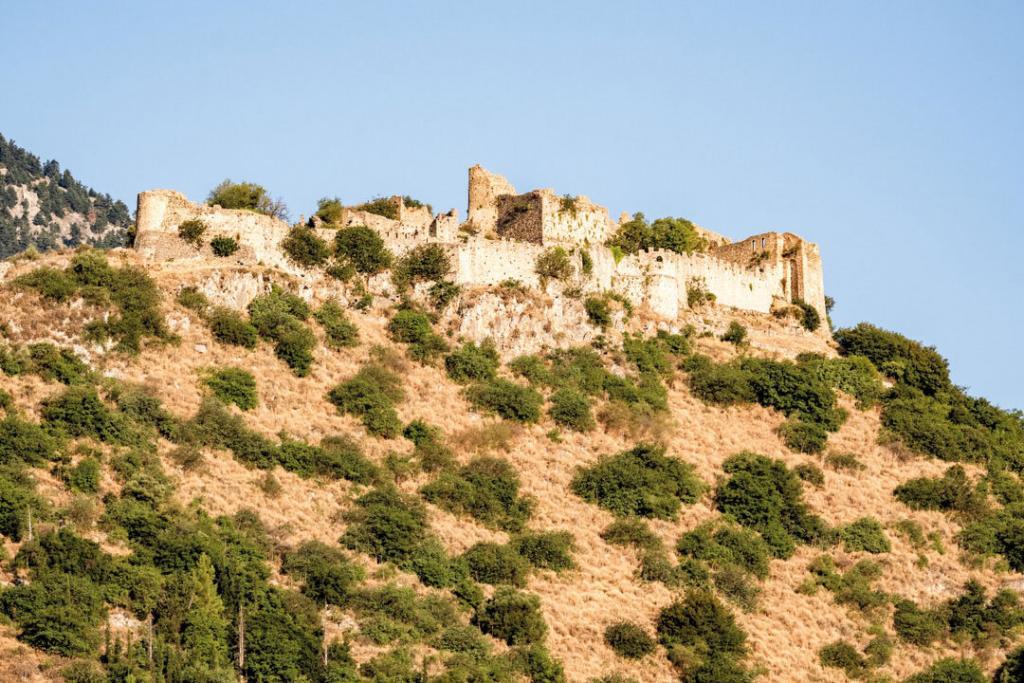
Make sure you have enough time on your hands because these dramatic and historical Byzantine ruins were once built by the war-weary Spartans at the 300-metre-high foot of the Taygetos mountains. During their heyday, 20,000 people lived in the divided city behind intact fortress walls. Today, the well-preserved buildings and monasteries are open to tourists. Cobbled and twisting lanes led us past palaces, churches, monumental gates, and medieval houses. Paintings, and sculptures adorn the monasteries and palaces. Time seems to have stood still here. The impregnable fortress on the mountain, built in 1249 by Frank Guillaume II de Villehardouin, the fourth Frankish prince of Morea (former name of the Peloponnese), affords an impressive view of the Evrotas valley and Sparta. From here, Guillaume II controlled the region of Laconia, protecting it from marauding Slavs.
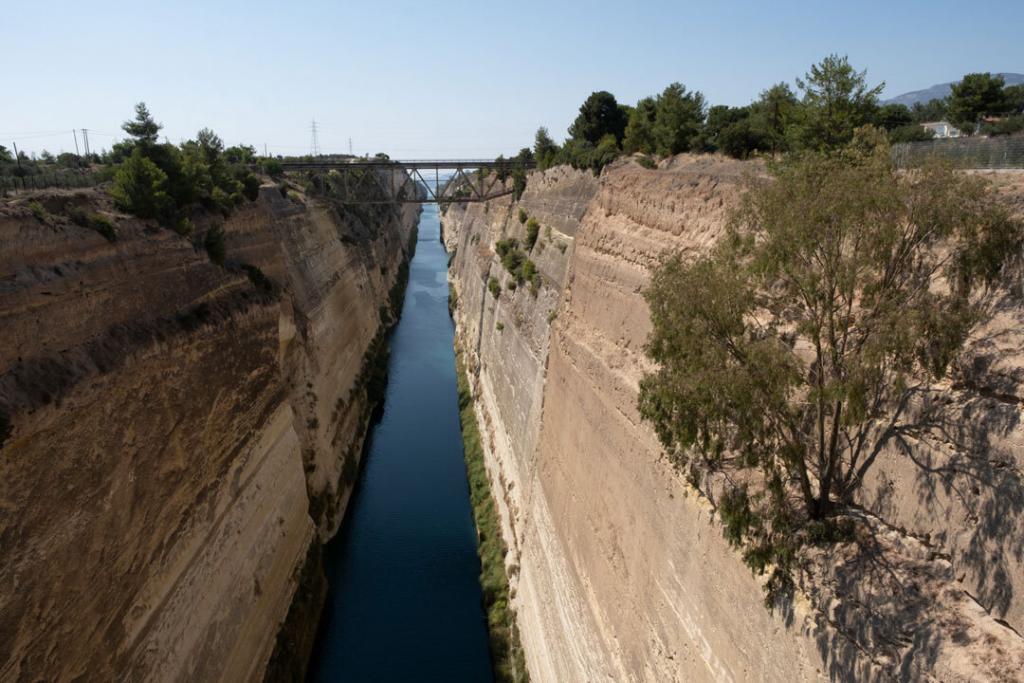
We finally reached the Corinth Canal in the sweltering midday heat. Originally dreamt up by the Greeks 2,600 years ago to support their conquests and trade, it took until the 19th century—just like Suez and Panama—before it was actually completed. At 6.3 kilometres in length and 24 metres wide, it connects the Corinthian and Saronic gulfs and saves ships a 400-kilometre journey. All of its bridges and much of its steep walls were destroyed during the Second World War. Reconstruction began in the 40s, and it was put back into service in 1948. Several ships pass through here daily.
Time to fill up with fuel before embarking on the long stretch to the north. We should take this opportunity to mention the diesel prices. Filling up in Europe is inexpensive. At the time, the average price was around €1.35 per litre.

Perched atop natural sandstone columns, the mystical Meteora monasteries reach skyward. They, too, belong to the many UNESCO world heritage sites in Greece and lie to the east of the Pindos mountains in Thessaly, near to the city of Kalambaka. Meteora translates to “floating on air.” Quite appropriate because when the clouds are low or there is thick haze, they really do look as if they are floating. Twenty four individual monasteries and hermitages were built on the bizarre stone formations from the 14th century onwards. Only six are still occupied by monks or nuns today and remain open to the public. The remainder are closed, either because they are virtually impossible to reach, or in danger of collapsing. Real natural wonders.
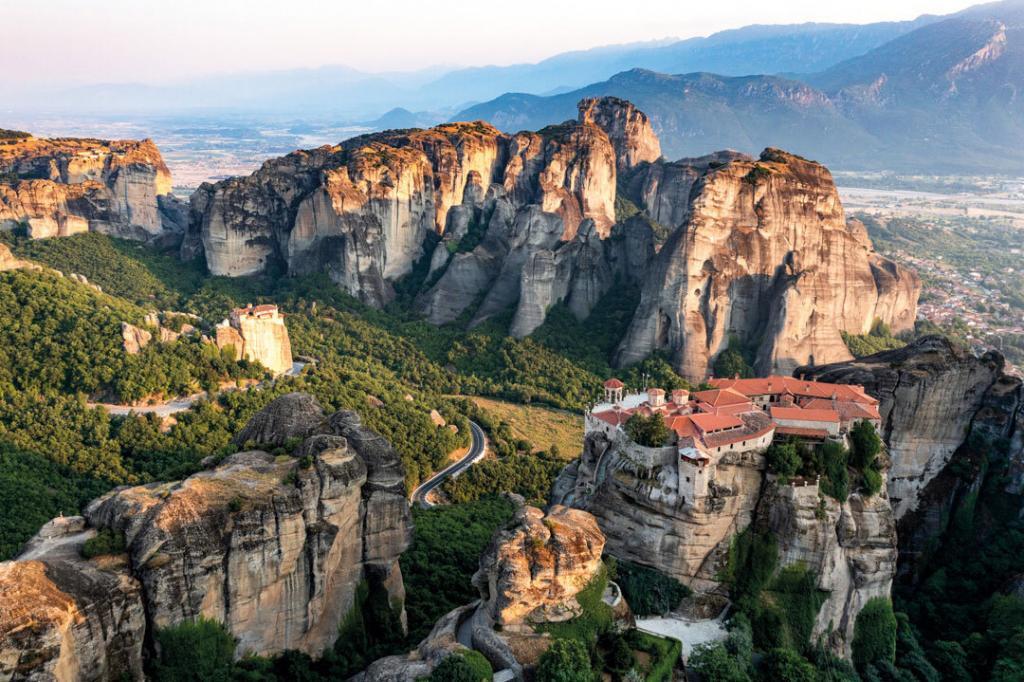
Nature enthusiasts, active holidaymakers and photographers will all be in their element here as well. Plenty of hiking trails lead through impressive scenery. The rocks, upon which the monasteries stand, are one of Greece’s most popular attractions for mountaineers from around the world.
Eventually, forest fires and the extreme temperatures forced us to leave Greece. We are saving the north, the Vikos Gorge, Athens, and the third peninsula for our next visit. With the fires and heat behind us, we sought new places to explore in Italy, France and Spain. But that’s another story.
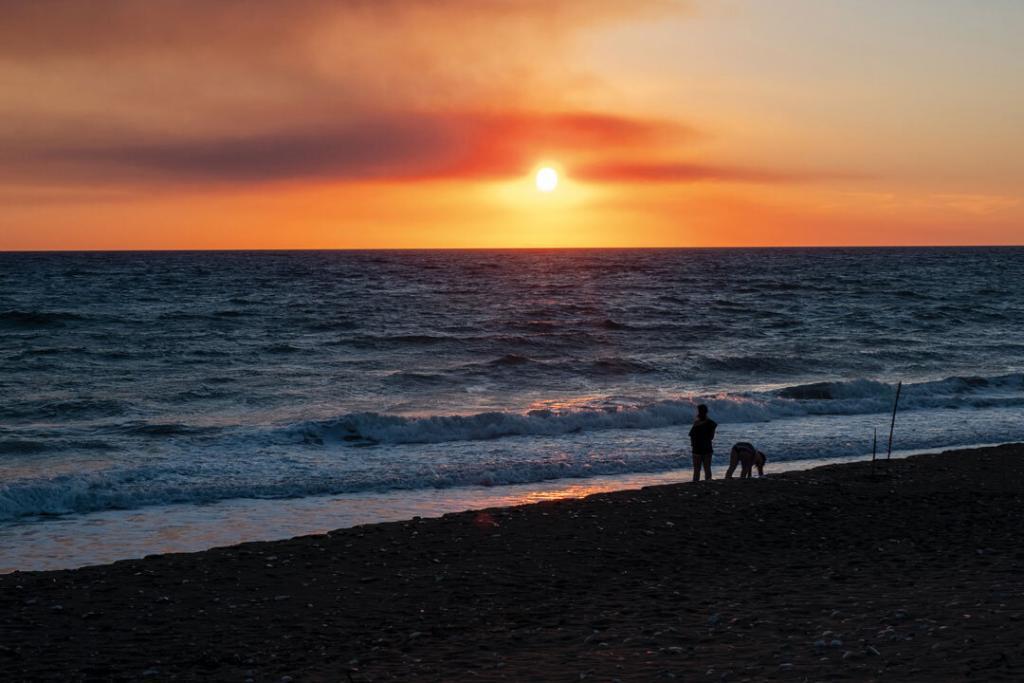
IN RETROSPECT
The time we spent in Greece passed far too quickly, and looking back, we realised we’ve only seen a few of the highlights. Another trip into the region is on the cards, but seeing as we prefer to avoid the high temperatures, we’ll probably come back in March/June or September/October.
HOW ABOUT THE DREAM OF VANLIFE?
There is magic in every beginning (Hermann Hesse). The same applies to us. Returning home after four months isn’t easy. Cooped up inside our own four walls in the big city, it’s almost as if we can’t breathe—as if someone has strapped us into a tight corset. Out on the road, every day unfolds a new adventure. And if you follow a few basic rules, travelling becomes an addiction: independent, exhilliarating, with manageable costs. Maybe one day you’ll become a full-time VanLifer, too.
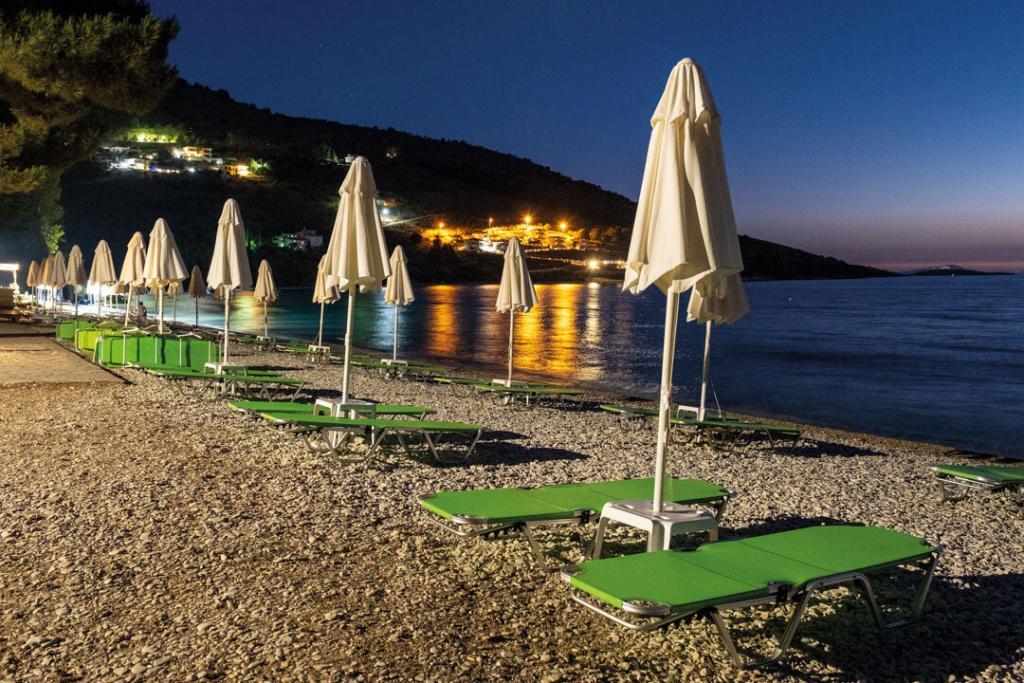
AND THE 4X4 SPRINTER HYMER DUOCAR?
After a thorough clean we reluctantly returned the DuoCar to AllRoad Reisemobile. Another benefit: we don’t have to worry about winter storage. There was a lot to like about the DuoCar: its spacious interior, the large kitchen block and generous work surface, and the lounge feeling on the leather couch are just a few of the highlights. Having to convert the couch into a huge bed every night was less attractive. We missed windows that can be left ajar, skylights, an awning (which would have made life more bearable in the heat), more cupboards (a trade-off against the lounge feeling), and bigger batteries with solar panels on the roof. Fortunately, AllRoad Reisemobile had sent us on our way with a folding solar panel and a voltage converter, which improved our autonomy and meant we could still park in the shade.
But it was the combination of all-wheel drive and low ratios—for those tricky moments—and the powerful three-litre engine with its automatic gearbox that made the Sprinter really useful. The four-wheel drive saved the day on more than one occasion. Hymer’s DuoCar is, and always will be, a fun travelling van which can take you off the beaten track.
PERSONAL NOTES
We learned a lot about what a future van must have, and all the clothes and “just-in-case” things we really didn’t need to take along. Six metres are six metres. The ideal length if you want to drive into towns and villages or along twisty mountain roads where room to manoeuvre can be restricted. Six metres and an inconspicuous colour also meant we could park overnight beside the road without sticking out like a sore thumb.

Editor’s note: AllRoad Reisemobile have since converted a Sprinter according to their own specifications. We look forward to testing the promising and autonomous 4×4 Atacama soon.

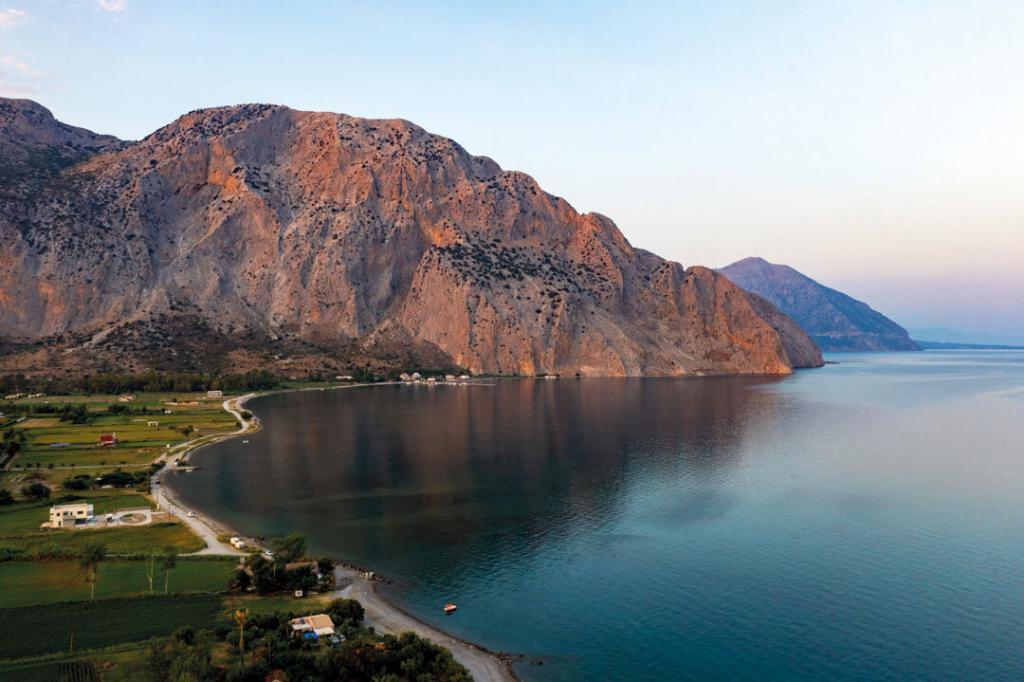
This article first appeared in the Autumn 2021 issue of Overland Journal now available as a digital magazine on the Apple App Store and Google Play Store.

